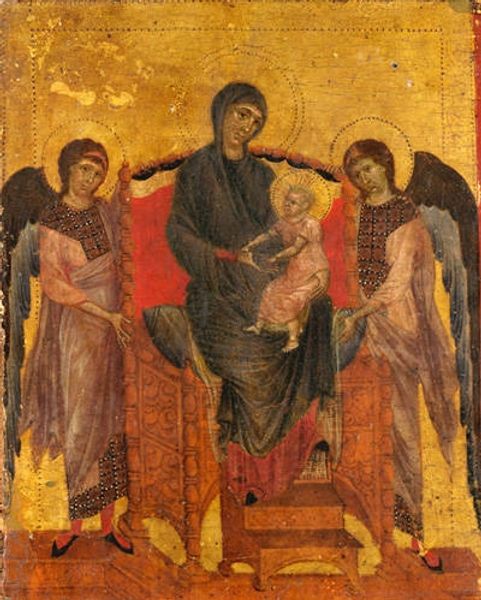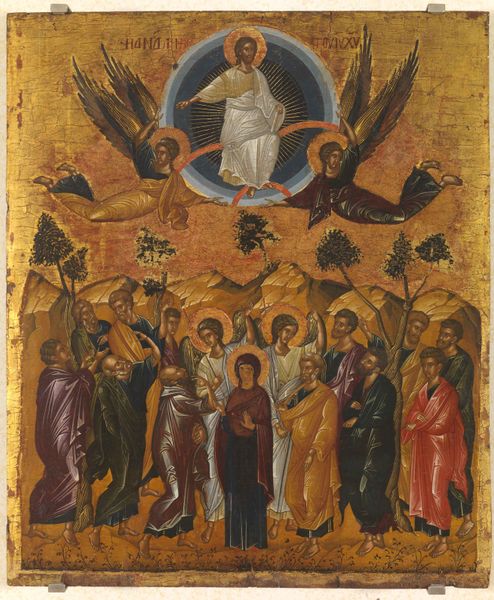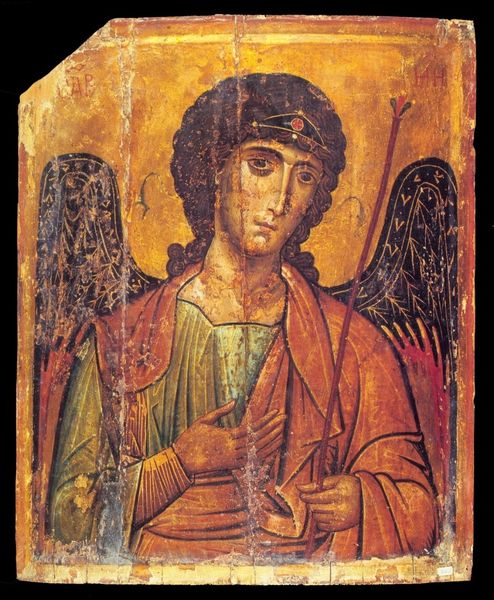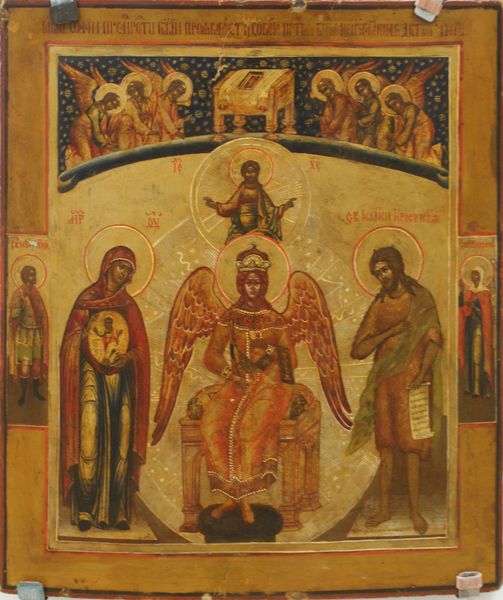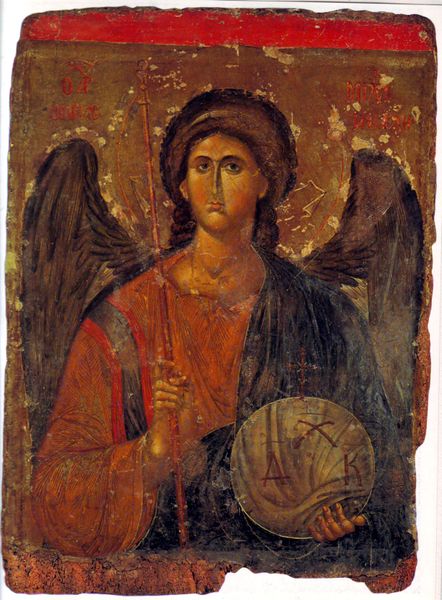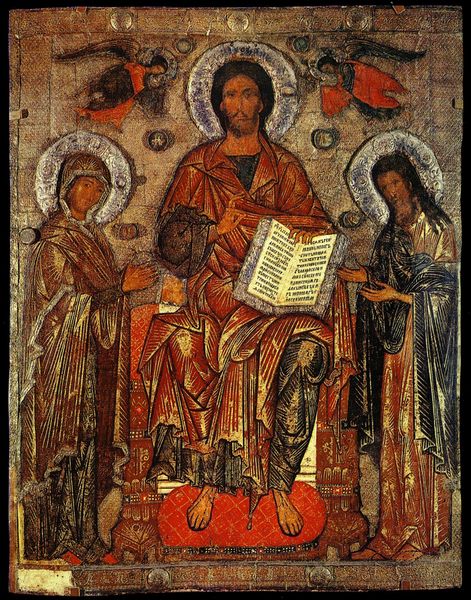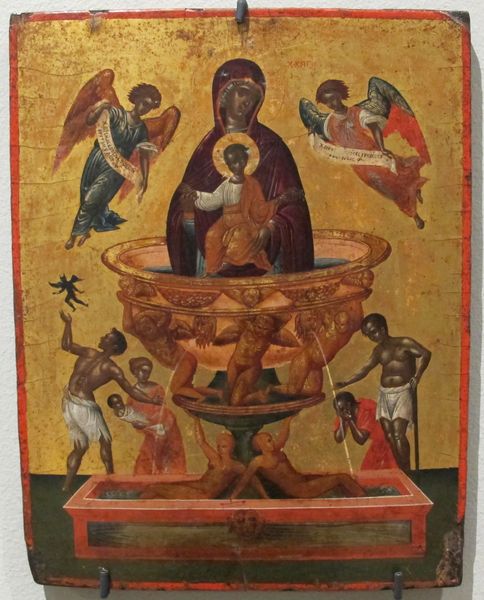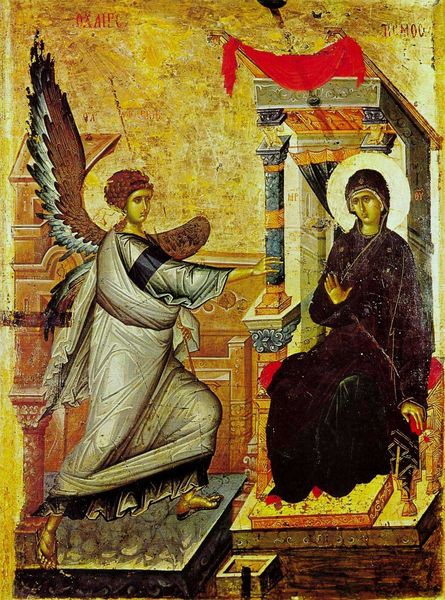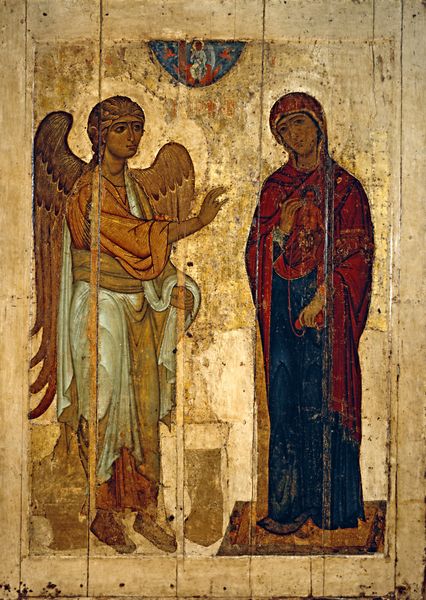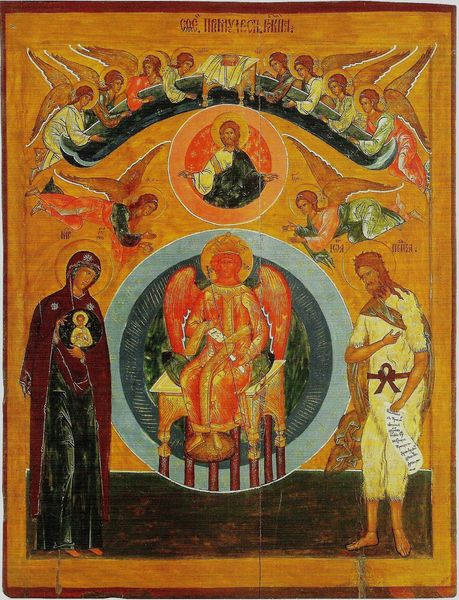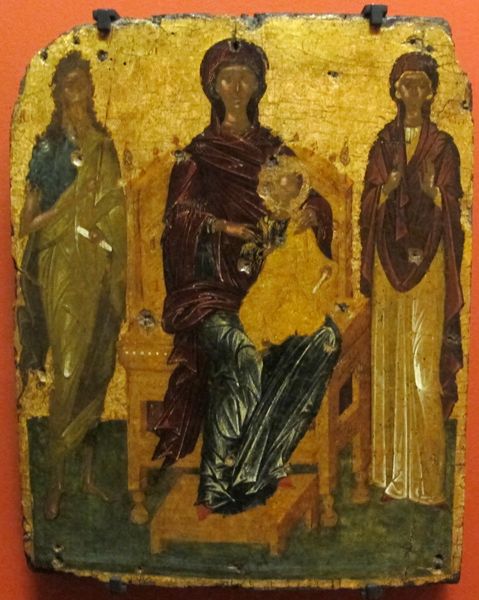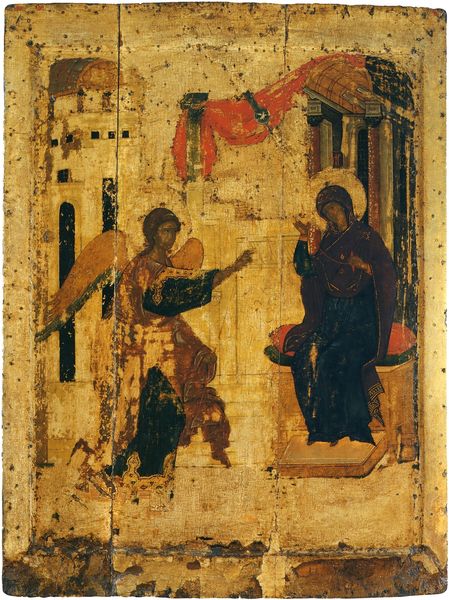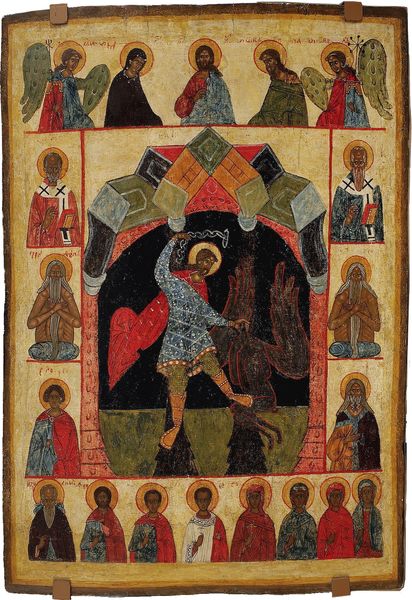
tempera, painting, gold
#
byzantine-art
#
medieval
#
narrative-art
#
tempera
#
painting
#
gold
#
figuration
#
history-painting
Copyright: Public domain
Editor: Here we have "Fiery Furnace, Mashtots," created in 1266 by Toros Roslin. It’s tempera and gold, giving it this radiant quality. It depicts figures seemingly unbothered by the intense fire all around them. What do you make of this artwork, with its striking juxtaposition of serenity and inferno? Curator: This piece speaks volumes through its visual language. Consider the gold background; it's not merely decorative. What does gold signify to you in religious iconography? Editor: Divinity, perhaps? Something sacred and eternal? Curator: Precisely. And juxtapose that with the fiery furnace below. The fire is real, yet the figures are protected. The flames themselves are stylized, almost like decorative motifs, rather than a representation of intense heat. Do you notice anything peculiar about the figures' haloes? Editor: They appear to be emanating light, but they're also quite distinct and separate, not blending into the gold background. Curator: Indeed. They are emblems of sanctity and separateness. The scene echoes a narrative deeply embedded in cultural memory: faith's power to transcend worldly suffering. Roslin uses these symbols not just to illustrate a biblical story, but to instill a sense of enduring hope and resilience in the viewer. The iconography invites meditation on faith and divine intervention. Editor: It’s fascinating how the artwork blends this story of withstanding hardship with the richness of religious symbolism. I definitely see now that the fire and the serenity work together. Curator: Art provides a safe place to consider stories. Consider how different the image is compared to hearing the story itself. This fusion allows for contemplation, making the piece a mirror reflecting inner resilience and cultural values.
Comments
No comments
Be the first to comment and join the conversation on the ultimate creative platform.
